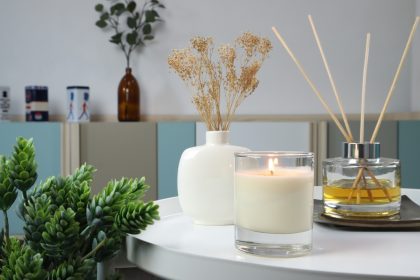
When Blue Ivy Carter made a public appearance at the premiere of Mufasa: The Lion King, wearing a custom Christian Siriano gown, the attention she received wasn’t just about her star power or the exciting moment for the Carter family—it became a reflection of society’s deeply ingrained biases. At only 12 years old, Blue Ivy was thrust into the spotlight, and instead of the focus being on her impressive achievements, much of the public discourse was about her appearance. This scrutiny reveals how society continues to impose unfair standards on young Black girls, scrutinizing them in ways that go far beyond their White counterparts.
Achievements overshadowed
Blue Ivy, daughter of music mogul Beyoncé and rapper Jay-Z, is no stranger to accolades. She’s already earned a Grammy, narrated an Oscar-winning film, and contributed to various successful stage performances. Yet, despite these remarkable accomplishments, much of the conversation around her centers on how she looks rather than the substance of her achievements. This pattern speaks to a broader issue: society often places an overwhelming emphasis on the appearance and behavior of young Black girls, while disregarding their talents and accomplishments. The public’s reaction to Blue Ivy’s recent red carpet moment serves as just one example of this ongoing trend.
The double standard dynamic
The critical response to Blue Ivy’s appearance is part of a troubling double standard. While children of other celebrities—especially White children—often receive praise for expressing themselves through fashion or public appearances, Black girls face harsh judgment. Whether it’s comments about their hair, their clothing choices, or their mannerisms, Black girls are often held to standards that seem impossible to meet. This disparity is not just evident in the entertainment industry but extends far beyond it, affecting how young Black girls are viewed and treated in schools, in public spaces, and even within their own communities.
The societal tendency to scrutinize Black girls for simply existing and expressing themselves in public spaces can be both frustrating and disheartening. But what does this scrutiny really mean for young Black girls trying to navigate their own identities and find their voice?
Understanding the deeper impact
The impact of such relentless scrutiny goes beyond public commentary—it can shape how young Black girls see themselves. For many, the constant judgment on their appearances, behavior, and self-expression leads to long-term consequences.
Diminished sense of self-worth: When public discourse revolves around a young girl’s looks rather than her talents, it can diminish her sense of value. If external validation is always tied to physical appearance, it may lead to feelings of inadequacy when one’s worth isn’t recognized for their achievements or character.
Pressure to conform to unrealistic standards: This scrutiny can also create immense pressure to conform to society’s unrealistic beauty standards, which often exclude Black girls. The pressure to fit into a mold that doesn’t reflect their identity can stifle creativity and force young girls to suppress who they truly are.
Suppression of natural creativity and expression: The fear of being judged can also suppress natural self-expression. In an environment where appearance is constantly policed, many young Black girls may hesitate to show their true personalities, stifling their creativity in the process.
Internalized messaging about acceptable behavior: From a young age, girls may internalize the notion that their worth is tied to their appearance, leading to a cycle of self-criticism and insecurity that follows them into adulthood. The message that their looks are more important than their abilities or character becomes ingrained.
Limited freedom to explore personal identity: As the public continually criticizes their appearances, young Black girls may feel confined by the expectations placed upon them. This stifles their ability to fully explore who they are, what they stand for, and what they want to express through their fashion, art, and creativity.
Breaking free from stereotypes
The roots of these biases trace back to long-standing stereotypes about Black women and girls. These stereotypes have been woven into the fabric of history, perpetuated by a society that has often sought to limit Black self-expression. Understanding how these harmful patterns developed is essential in breaking them down and creating space for young Black girls to thrive without constant judgment.
Challenging harmful stereotypes requires both personal reflection and collective action. It involves recognizing how deeply embedded biases influence how we perceive and treat young Black girls. It also requires us to support their right to exist in public spaces without facing unfair scrutiny.
Fostering empowerment
Supporting and empowering young Black girls is not only about speaking out against harmful scrutiny but also actively creating environments where they can flourish. Encouraging their creativity, validating their experiences, and celebrating their achievements is crucial to fostering self-confidence.
Celebrating achievements over appearances: Rather than fixating on physical appearance, we must prioritize celebrating their accomplishments—whether academic, artistic, or athletic. Recognizing and applauding their talents will help them develop a healthy sense of self-worth and make them feel valued for who they truly are.
Supporting creative self-expression: Allowing young Black girls to express themselves freely—whether through fashion, art, or words—without fear of judgment helps build their confidence. Creating spaces for them to explore their creativity is essential in helping them realize their full potential.
Challenging harmful narratives: We all have a responsibility to challenge the harmful narratives about Black girls. This involves actively questioning biased media coverage, engaging in conversations about representation, and promoting diverse and positive portrayals of Black girls in public spaces.
The role of media and society
Media, both traditional and social, plays a key role in shaping public perception. Unfortunately, too often, the media perpetuates negative stereotypes of Black girls, focusing on their appearance or behaviors instead of their accomplishments. By amplifying positive stories and rejecting stereotypical portrayals, we can contribute to creating a more equitable and supportive environment for young Black girls.
Question biased reporting: It’s crucial to recognize when media outlets engage in biased reporting about Black girls and call out these instances. Challenging unfair narratives is a powerful way to shift public discourse.
Promote diverse perspectives: Instead of allowing one narrow perspective of Black girlhood to dominate, we should support a more nuanced view that acknowledges the diversity of experiences and talents within the community.
Supporting the next generation
Empowering young Black girls requires more than just dismantling stereotypes—it requires collective action. From mentorship to advocacy, everyone has a role to play in supporting Black girls.
Celebrate uniqueness: Each Black girl has a unique story, and it’s important to celebrate that individuality. By validating their experiences and perspectives, we help them develop the confidence to navigate the world on their own terms.
Create inclusive environments: Creating inclusive spaces in schools, media, and other public spaces ensures that Black girls feel seen, heard, and valued. These environments should support their growth and development without placing undue pressure on their appearance or behavior.













